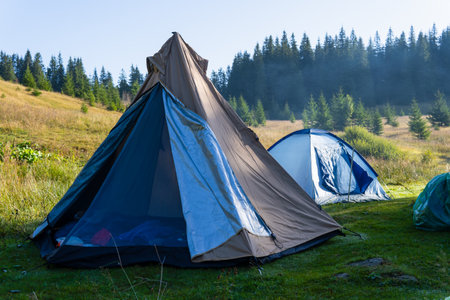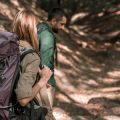1. Choosing the Perfect Beach for Tent Camping
Discovering Family-Friendly Beach Camping Spots Across the U.S.
Planning a beach camping trip with your family is all about finding the right spot that’s safe, fun, and accessible for everyone. The U.S. has some amazing beaches that welcome tent campers, from the wild shores of California to the warm sands of Florida and the scenic coasts of the Carolinas. Here are some popular family-friendly options:
| Beach Location | State | Special Features |
|---|---|---|
| Assateague Island National Seashore | Maryland/Virginia | Wild horses, nature trails, and ocean views |
| Cape Hatteras National Seashore | North Carolina | Miles of sandy beaches, lighthouses, water sports |
| Hunting Island State Park | South Carolina | Pine forests, family-friendly amenities, fishing pier |
| Padre Island National Seashore | Texas | Turtle nesting sites, birdwatching, long stretches of sand |
| Leo Carrillo State Park | California | Tide pools, hiking trails, close to Malibu attractions |
| Anastasia State Park | Florida | Sandy dunes, playgrounds, canoe rentals |
Understanding Important Regulations Before You Go
Every beach has its own set of rules to keep campers safe and protect nature. Before you pack your tent, always check:
- Campsite Permits: Many beach campsites require advance reservations and a camping permit.
- Fire Restrictions: Some beaches allow campfires in designated areas only; others may have fire bans.
- Pets Policy: Not all beaches are pet-friendly—check before bringing furry friends along.
- Tide Warnings: Make sure your campsite is above the high-tide line to avoid wet surprises at night!
- No-Trace Camping: Most spots require you to clean up everything you bring in—leave only footprints behind.
Selecting a Safe and Accessible Campsite for Your Family Adventure
The perfect beach campsite balances adventure with comfort and safety. Here are a few things to consider when choosing your spot:
- Accessibility: Is it easy to walk from parking to your site? If you’re camping with kids or grandparents, choose a location with nearby facilities like restrooms and picnic tables.
- Shelter & Shade: Beaches can get hot! Look for sites with natural shade or enough space for a canopy.
- Amenities: Restrooms, showers, grills, and fresh water are must-haves for many families.
- Distance to Activities: Pick a spot near swimming areas, hiking trails, tide pools, or playgrounds so everyone can join the fun.
- Safety Features: Avoid pitching tents too close to cliffs or unstable dunes. Stay aware of wildlife warnings posted at your destination.
Your Next Step: Start Dreaming About Your Family’s Beach Escape!
The right beach sets the stage for an unforgettable tent camping adventure. Explore your options, check local regulations ahead of time, and get ready for sun-kissed days and starry nights by the shore!
Essential Gear for Beach Tent Camping
Tent camping on the beach is a magical family adventure, but packing the right gear makes all the difference. Here’s a handy checklist to keep your family comfy, cozy, and safe while you sleep by the ocean waves.
Tents & Sleeping Gear: Designed for Sand and Sea Breezes
Not every tent is made for sandy shores! Choose a tent with strong stakes (sand anchors or sandbags work best) and plenty of ventilation to let in the sea breeze. A waterproof rainfly is essential since beach weather can change quickly. For sleeping, opt for lightweight sleeping bags and inflatable or foam sleeping pads—they help insulate against the cool sand at night.
| Item | Why You Need It |
|---|---|
| Sand-Ready Tent | Stays anchored in shifting sand; mesh windows keep things breezy |
| Sand Stakes/Sandbags | Prevents your tent from blowing away in windy conditions |
| Sleeping Bags (lightweight) | Keeps you warm without overheating on mild nights |
| Sleeping Pads or Air Mattresses | Adds cushion and insulation from the ground |
| Pillows (inflatable or packable) | For cozy, restful sleep under the stars |
Shade & Shelter: Extra Comfort Under the Sun
The sun can be intense at the beach, so bring extra shade even if your tent has a canopy. Pop-up sun shelters or large beach umbrellas give you a cool place to relax during the hottest part of the day. Don’t forget sunglasses and hats for everyone!
Recommended Shade Essentials:
- Pop-up sun shelter or canopy
- Large beach umbrella
- Sunglasses with UV protection
- Wide-brimmed hats and sun shirts for kids and adults
- Sunscreen (reef-safe is best for ocean trips!)
Beach Kitchen: Simple Meals by the Shore
A few smart kitchen essentials make camp cooking easy—think s’mores over a small camp stove or picnic-style sandwiches. Pack reusable plates, utensils, a cooler with ice packs, and lots of water. Remember, many U.S. beaches have rules about open flames, so check ahead before bringing a grill or fire pit.
| Kitchen Essential | Purpose |
|---|---|
| Portable camp stove (if allowed) | Safe cooking option for hot meals or coffee in the morning |
| Reusable plates/cups/utensils | Keeps waste down; better for the environment |
| Cooler with ice packs | Keeps food fresh and drinks cold all day long |
| Bottled water/reusable water bottles | Hydration is key under the sun! |
| Wet wipes/paper towels/trash bags | Makes cleanup quick and keeps your campsite tidy—leave no trace! |
| Smores kit (marshmallows, chocolate, graham crackers) | No American camping trip is complete without this classic treat! |
Smart Extras: Little Things That Make a Big Difference
- Flashlights/headlamps with extra batteries (for night walks on the sand)
- Campsite chairs or beach mats (relax in comfort)
- Towels (quick-dry are great for multiple uses)
- Ziploc bags or dry sacks (protect electronics and snacks from sand and water)
- A small first-aid kit (always be prepared!)
- Bug spray (especially near dunes or marshy spots)
- Beach toys—frisbees, buckets, shovels—for family fun by the shore!
- A guidebook or tide chart (helpful for exploring safely)
Packing Tip:
Pack everything in sturdy totes or duffel bags that can stand up to salt air and damp sand. Labeling each bag—“kitchen,” “sleeping,” “toys”—makes it easy to find what you need after a long day playing in the surf.

3. Staying Safe and Respecting Nature
How to Prepare for Tides
Before you set up your tent on the beach, always check the local tide schedule. U.S. beaches can have big changes in water levels, especially during full moons or storms. Set up your camp above the high tide line—look for seaweed lines or driftwood as clues! If you’re not sure, ask a park ranger or check the NOAA Tide Predictions online.
| Tide Prep Step | Why It Matters |
|---|---|
| Check tide charts before arrival | Avoids waking up to water in your tent! |
| Camp above high tide marks | Keeps your gear safe and dry |
| Monitor weather apps for storm warnings | Prepares you for sudden changes in tides or winds |
Sun Safety Tips for Families
The sun at the beach can be intense, even on cloudy days. Always pack reef-safe sunscreen (SPF 30 or higher), wide-brimmed hats, sunglasses, and light, long-sleeved clothing. For little ones, pop-up shade tents work wonders for nap time or play breaks. Don’t forget to reapply sunscreen every two hours—and after swimming!
Sun Safety Checklist:
- Sunscreen (reef-friendly)
- Hats & sunglasses for everyone
- Lightweight cover-ups or rash guards
- Portable shade tent or umbrella
- Plenty of water to stay hydrated
Wildlife Awareness: Share the Beach Safely
From curious seagulls to scurrying crabs and even sea turtles, wildlife is part of what makes beach camping magical. Never feed wild animals—human food can harm them and attract unwanted guests to your campsite. Store all food in sealed containers and keep trash secured until you can dispose of it properly. Remember: watch wildlife from a distance and teach kids not to disturb nests or critters.
Common Beach Wildlife Encounters:
| Animal | What To Do |
|---|---|
| Seagulls & birds | Don’t leave food out; keep lids on coolers |
| Turtles (especially at night) | Avoid lights near nesting areas; don’t touch or disturb nests |
| Crabs & small creatures | Watch where you step; observe gently, don’t pick up |
Know and Follow Local Rules
Every beach has its own rules—some allow fires, others don’t; some welcome dogs, while others restrict them during turtle nesting season. Look for posted signs or ask a ranger about:
- Campsite boundaries and permits required
- Fire regulations (bring a fire pit if needed)
- Pets: leash laws and restricted areas
- No-glass policies (many beaches ban glass bottles for safety)
- Quiet hours to respect other campers and wildlife
Leave No Trace: Keep Beaches Beautiful for All
The best way to make sure your family’s beach camping trip is fun for everyone—including future visitors—is to follow Leave No Trace principles. Here are easy ways to do your part:
| Leave No Trace Tip | How To Do It with Kids |
|---|---|
| Pack out all trash—even tiny pieces like bottle caps or food wrappers. | Create a “micro-trash” game: see who can collect the most small litter items! |
| Avoid picking flowers or removing shells/rocks. | Take only photos; start a nature journal instead of collecting souvenirs. |
| Bury human waste far from water sources if restrooms aren’t available. | If necessary, show older kids how to dig a proper cathole (at least 200 feet from water). |
| Douse campfires completely with water—not just sand—before leaving. | Let children help pour water and stir ashes safely (with supervision). |
Your family’s care helps preserve these amazing places so more people can enjoy sandy adventures year after year!
4. Meal Planning and Beach-Friendly Food Tips
Easy Family Meal Ideas for Beach Camping
When you’re tent camping on the beach, simple and satisfying meals are key! You want food that’s easy to pack, quick to prepare, and fun for the whole family. Here are some tried-and-true meal ideas perfect for sandy toes and salty breezes:
| Meal | Prep-Ahead Option | Beach-Friendly Tip |
|---|---|---|
| Breakfast Burritos | Wrap scrambled eggs, cheese, and cooked sausage in tortillas at home; wrap in foil | Heat over a campfire or portable grill |
| Sandwiches & Wraps | Pack deli meats, cheeses, and veggies separately to assemble fresh on site | Use whole wheat wraps—they hold up well in coolers! |
| Pasta Salad | Make ahead with your favorite veggies and protein (like grilled chicken) | Add dressing just before serving to keep things crisp |
| Quesadillas | Pre-fill with beans and cheese; bring a skillet for easy reheating | Add salsa or guac for extra flavor after warming up |
| Grilled Foil Pack Dinners | Pre-chop veggies, potatoes, and marinated meat or fish at home; seal in foil packets | Throw them right on hot coals—no mess! |
Snack Hacks for Happy Campers
- Tropical Trail Mix: Mix dried pineapple, banana chips, coconut flakes, pretzels, and chocolate chips.
- DIY Snack Packs: Use reusable containers for crackers, string cheese, baby carrots, and grapes.
- No-Melt Treats: Choose snacks like granola bars or nut butter packets that don’t require refrigeration.
- Crispy Apple Chips: Bake thin apple slices at home for a sweet, sandy-proof snack.
- S’mores Supplies: Don’t forget classic marshmallows, chocolate, and graham crackers for beach bonfires!
Keeping Food Fresh & Tasty by the Shore
Clever Storage Tips:
- Bring Two Coolers: One for drinks (opened often) and one just for food (stays colder longer).
- Icy Layers: Pack food in watertight containers with ice packs above and below.
- Avoid Sand: Use lidded containers or zipper bags to keep gritty sand out of your snacks.
- Sunscreen for Food? Not quite—but shade helps! Store coolers under umbrellas or in the tent’s shadow.
- Breeze-Proof Your Meals: Weigh down napkins and plates with small stones or shells so lunch doesn’t fly away!
A Little Prep Goes a Long Way!
A little planning means you’ll spend more time playing in the waves—and less time worrying about hungry tummies. With these tips and easy recipes, mealtime can be another fun part of your family’s beach camping adventure!
5. Fun Beach Activities for the Whole Family
One of the best parts about tent camping on the beach is all the fun you can have right outside your tent! Whether your family includes toddlers, tweens, or teens, there’s something for everyone to enjoy. Here are some easy and exciting ideas to make your beach camping trip truly memorable.
Classic Beach Games Everyone Can Play
| Game | What You Need | Age Group |
|---|---|---|
| Beach Ball Volleyball | Beach ball, net (or just draw lines in the sand) | All ages |
| Sandcastle Contest | Buckets, shovels, imagination! | Toddlers to teens |
| Frisbee Toss | Frisbee or flying disc | Younger kids & up |
| Tug-of-War | Rope or strong towel | Kiddos & adults alike |
| Cornhole or Bean Bag Toss | Cornhole set or homemade bean bags/boards | All ages |
Water Play: Make a Splash Safely
- Paddle Boarding or Kayaking: Bring inflatables or rent from local shops for calm-water adventures. Always use life jackets for kids.
- Splash Races: Organize friendly foot races along the shallow water’s edge—great for burning off energy!
- Tide Pool Exploration: Look for little sea creatures together (bring a bucket and magnifying glass). Remind everyone to be gentle with wildlife.
- Bubbles on the Beach: Toddlers love chasing bubbles on a breezy day. Pack a bubble wand and watch them giggle.
Evening Bonfire Traditions
- S’mores Night: Gather around the fire with graham crackers, marshmallows, and chocolate bars. Don’t forget roasting sticks!
- Campsite Sing-Along: Print out lyrics or play favorite tunes on a portable speaker for a beachy karaoke session.
- Story Time Under the Stars: Take turns telling stories or reading picture books by lantern light.
- Nightsky Scavenger Hunt: See who can spot constellations first—use a star chart app for extra fun!
Nature Exploration as a Family
- Sandy Treasure Hunt: Bury small toys or shells and create simple maps for kids to follow.
- Dune Hiking: Explore nearby dunes and talk about plants and animals you see (just stay on marked paths).
- Beachcombing: Collect shells, driftwood, and smooth stones for crafts back at camp.
- Makeshift Nature Journal: Bring notebooks so everyone can draw what they find or write about their day.
Packing Tips for Family Fun Gear
- Packing cubes or mesh bags help keep beach toys and games organized.
- A collapsible wagon makes it easier to haul gear from your car to your campsite.
- If you’re bringing electronics (like speakers), remember to pack waterproof cases or bags just in case.
Your family’s beach camping trip can be filled with laughter, adventure, and new traditions—no matter how old your campers are!
6. How to Prepare Kids for the Adventure
Setting Expectations Together
Before your tent camping trip on the beach, gather your kids and talk about what the adventure will be like. Explain that sleeping in a tent near the ocean is different from being at home. Let them know about the fun things (like s’mores and sandcastles), but also mention some challenges, such as getting sandy or hearing nighttime sounds. Reassure them that these are all part of the experience and that you’ll be there together.
Involving Kids in Packing
Getting kids involved in packing not only makes them feel important but also helps teach responsibility. Give them a simple checklist and let them help choose their clothes, favorite snacks, or even a special stuffed animal for bedtime. You can use this easy table to keep track:
| Item | Who Packs It? | Checked? |
|---|---|---|
| Swimsuit | Child | |
| Sunscreen | Parent | |
| Favorite Toy/Book | Child | |
| Sleeping Bag | Parent + Child | |
| Flashlight/Headlamp | Child | |
| Extra Clothes | Parent | |
| Snacks/Water Bottle | Child |
Teaching Beach Safety Basics
A day at the beach is exciting, but safety comes first. Practice saying your campsite number with your child so they can find their way back if needed. Remind them to always stay within sight and set clear boundaries about where they can play. Review how to spot lifeguards, what to do if they see wildlife, and why it’s important to wear shoes around the campsite (hot sand and sharp shells!). Make a game out of it by letting kids “quiz” each other on safety rules before you go.
Create Special Traditions for Your Trip
Tent camping on the beach is an amazing opportunity to start new family traditions. Maybe you’ll have a “first night dance” in the sand, or everyone gets to pick one seashell to take home as a keepsake. Consider bringing along a journal or disposable camera for your kids to document their favorite moments. These little rituals help make each trip unique and give your children memories to cherish long after you’ve packed up the tent.


